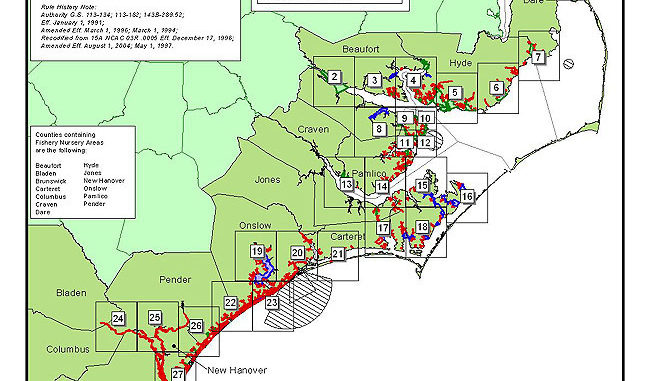
The N.C. Division of Marine Fisheries’ stock-status report on Atlantic croaker generates more questions than answers.
It presents a “concern” listing because it says scientists can’t “precisely determine overfished stock status,” although the coast-wide assessment says croaker “are not overfished and overfishing is not occurring.”
If you’re confused, how about the poor croakers? Recreational fishing for these tasty saltwater panfish in Pamlico Sound is and has been terrible for years, unlike the Chesapeake Bay’s tributaries that offer up 10- to 14-inch fish spring through fall.
Division biologist Jason Rock acknowledged shrimp trawling on croaker grounds, mainly Pamlico Sound, is a concern, but said the agency couldn’t make a definite call about the species’ overall health because it doesn’t have enough information about the effects of bottom trawling on juvenile croakers.
However, the Division actually does have that information. It came from studies from 2007-08 and 2011 conducted by staff biologist Kevin Brown, whose work indicates that infantile Atlantic croakers comprised from 24.79 to 33 percent of the total biomass caught by inshore trawlers and 38.9 percent of the total trawl by-catch.
If one acknowledges 30 infant croakers per pound and 44,092 pounds of incidental croakers caught annually in trawl nets (as the Division has reported), that translates into an astounding 1.3 million in annual by-catch croaker mortality.
Moreover, Brown’s study showed 78 percent by weight of all species caught in Pamlico Sound trawl nets is by-catch.
Anti-trawling groups such as the Coastal Fisheries Reform Group have used the studies to pound the N.C. Marine Fisheries Commission’s apparent inability to connect the dots and end multi-net otter trawling by large vessels.
Yet Rock defended inshore trawling.
“Approximately 45 percent of internal waters are closed to shrimp trawling,” he said. “(Division)-prescribed scientific analysis was undertaken to support these nursery-area rule designations, and all of Pamlico Sound did not meet these criteria. This was also the rationale for denying the recent petition-for-rulemaking request to classify all internal waters not already classified as primary or special secondary-nursery areas as permanent secondary-nursery areas.”
Three nursery-area finfish habitats — primary, permanent secondary and special secondary — are off limits to trawling. However those areas overlap — by a happy coincidence they’re also too shallow for trawl-boat keels — which means the majority of water from Roanoke Island through Pamlico Sound to Swansboro remains a huge trawl field to be plowed over and over.
Trawling opponents who cite massive by-catch totals say the entire Pamlico Sound is a nursery area. Interestingly, the Division’s stock-status reports for individual saltwater species indicate nursery areas exist sound-wide.
Whether the entire sound is, isn’t, should or shouldn’t be a nursery area for croaker — plus spot and gray trout — appear to be rabbit holes used to avoid facing five potentially management-altering facts: Pamlico Sound croaker fishing once was fantastic; large shrimp trawls have plowed the sound for years, killing millions of baby fish; most North Carolina croakers are less than nine inches long; Virginia bans inside trawling at its nursery areas; serious croaker anglers go to the southern Chesapeake Bay, particularly near Virginia Beach, to land magnum croakers — and gray trout.
Rock admitted “common sense” might lead one to think reduced otter trawling in Pamlico Sound would create an increase in juvenile croaker abundance, yet he said that “might not result in increased Atlantic croaker abundance coast-wide.”
To which trawling opponents might say: “Okay; we’re not worried about croakers from New Jersey to Florida. We’re worried about North Carolina croakers. Why isn’t NCDMF?”




Be the first to comment